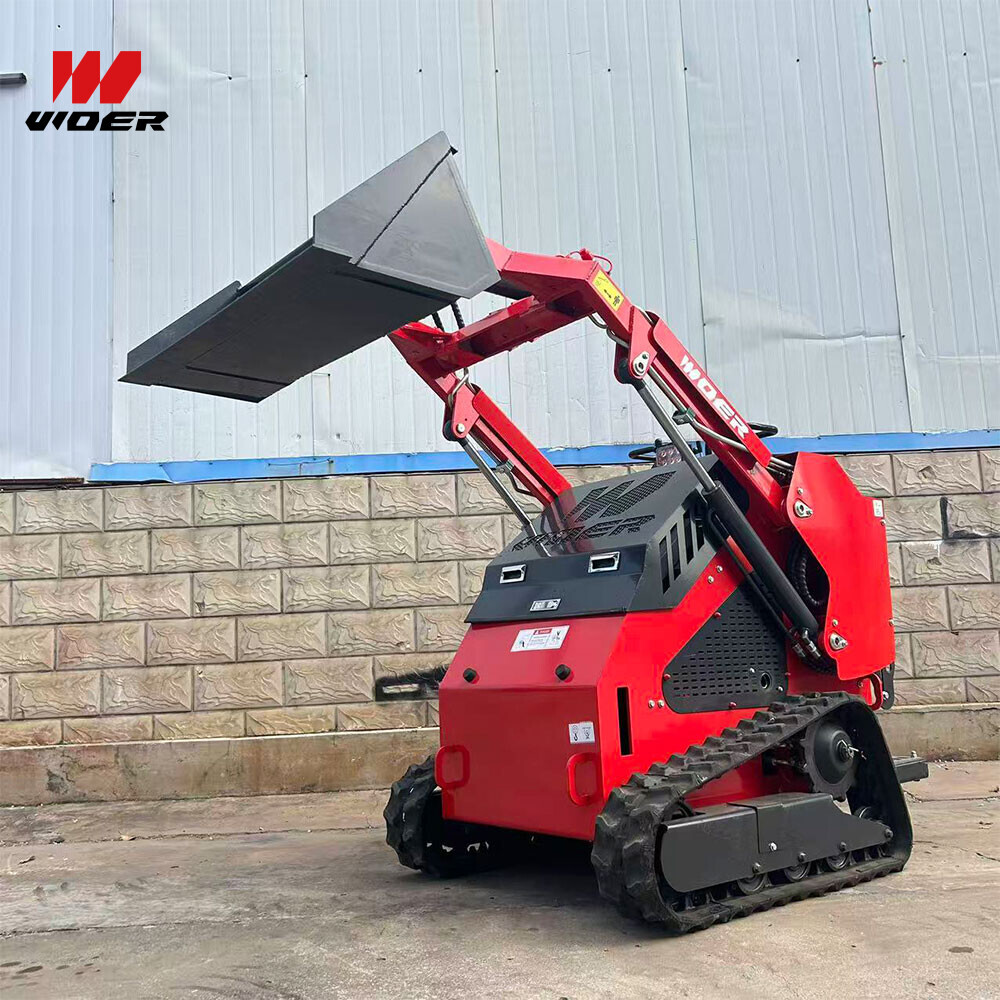Navigation
Contact us
Phone
Message

Introduction
When choosing between track vs. wheel skid steer loaders for wood processing operations, professionals need to evaluate terrain adaptability, productivity, and total cost of ownership. This comparison examines key factors like mini skid steer track loader stability on rough terrain versus wheel loader speed on flat surfaces, plus skid steer loader attachment compatibility. Whether you're a contractor selecting a small skid steer loader or a facility manager investing in heavy-duty equipment, our analysis provides data-driven insights for optimal equipment selection.
Definition and Overview
Skid steer loaders are versatile machines widely used in the wood processing industry for tasks such as material handling, loading, and site preparation. They come in two primary configurations: track skid steer loaders and wheel skid steer loaders. Track skid steer loaders, such as the mini skid steer track loader, are equipped with rubber or steel tracks that provide superior traction and stability on uneven or soft terrain. On the other hand, wheel skid steer loaders, like the small skid steer loader, offer faster travel speeds and better maneuverability on hard, flat surfaces. Both types can be fitted with various skid steer loader attachments, making them indispensable for wood processing operations.
Comparison Analysis
Terrain Adaptability
One of the most critical factors to consider when choosing between a track skid steer loader and a wheel skid steer loader is terrain adaptability. Track skid steer loaders, including the mini skid steer track loader, excel in challenging conditions such as muddy, rocky, or uneven terrain. The larger contact area of the tracks distributes the machine's weight more evenly, reducing ground pressure and minimizing soil disturbance. This makes them ideal for wood processing operations in forests or on construction sites with unstable ground. In contrast, wheel skid steer loaders are better suited for flat, hard surfaces like paved yards or indoor facilities. Their smaller contact area can lead to higher ground pressure, which may cause ruts or damage on soft terrain.
Productivity and Performance
Productivity is another crucial consideration. Track skid steer loaders generally offer slower travel speeds compared to their wheeled counterparts, but they provide more consistent performance in rough conditions. This can be a significant advantage when working in wood processing environments where stability and precision are paramount. Wheel skid steer loaders, on the other hand, can move faster between tasks, which can boost productivity on flat surfaces. Additionally, wheel loaders often have lower maintenance costs since tracks require regular inspection and replacement. However, the durability of modern track systems has improved significantly, reducing the gap in long-term operational costs.
Attachment Compatibility
Both track and wheel skid steer loaders can be equipped with a wide range of skid steer loader attachments, such as grapples, augers, and mulchers. However, the choice between track and wheel configurations may influence the type of attachments you can use effectively. For example, track skid steer loaders often provide better stability when using heavy attachments like wood chippers or stump grinders, making them a preferred choice for intensive wood processing tasks. Wheel skid steer loaders, while versatile, may require additional counterweights or modifications to handle heavier attachments safely.
Technical Performance
When evaluating the technical performance of skid steer loaders, several parameters come into play. These include engine power, hydraulic flow rate, lift capacity, and operating weight. Track skid steer loaders typically have higher operating weights due to their robust track systems, which can enhance stability and lifting capacity. However, this also means they may require more powerful engines to maintain performance. Wheel skid steer loaders, such as the small skid steer loader, often have lighter operating weights, making them more fuel-efficient and easier to transport. Hydraulic flow rate is another critical factor, as it determines the efficiency of skid steer loader attachments. Higher flow rates enable attachments to operate more effectively, which is essential for demanding wood processing applications.
Procurement Guide
Selecting the right skid steer loader for your wood processing operations involves careful consideration of several factors. First, assess the terrain conditions where the machine will be used. If your work involves rough or unstable ground, a track skid steer loader like the mini skid steer track loader may be the better choice. For flat, hard surfaces, a wheel skid steer loader could offer greater efficiency. Next, consider the types of skid steer loader attachments you plan to use. Ensure the machine's hydraulic system and lift capacity are compatible with your required attachments. Finally, evaluate the total cost of ownership, including purchase price, maintenance, and fuel consumption. While track skid steer loaders may have higher upfront costs, their durability and performance in challenging conditions can lead to long-term savings.
Cost and Alternatives
The cost of skid steer loaders varies significantly based on configuration, brand, and features. Track skid steer loaders generally command a higher price due to their advanced track systems and enhanced durability. However, they may offer better value in the long run, especially for wood processing operations in demanding environments. Wheel skid steer loaders, such as the small skid steer loader, are typically more affordable upfront and may be sufficient for less challenging tasks. When considering alternatives, compact track loaders and compact wheel loaders are worth exploring. These machines offer similar capabilities but may differ in size, power, and attachment compatibility. It's essential to weigh the pros and cons of each option based on your specific needs and budget.

This stunning beach house property is a true oasis, nestled in a serene coastal community with direct access to the beach.
Contact
West Street, Melbourne Victoria 3000 Australia